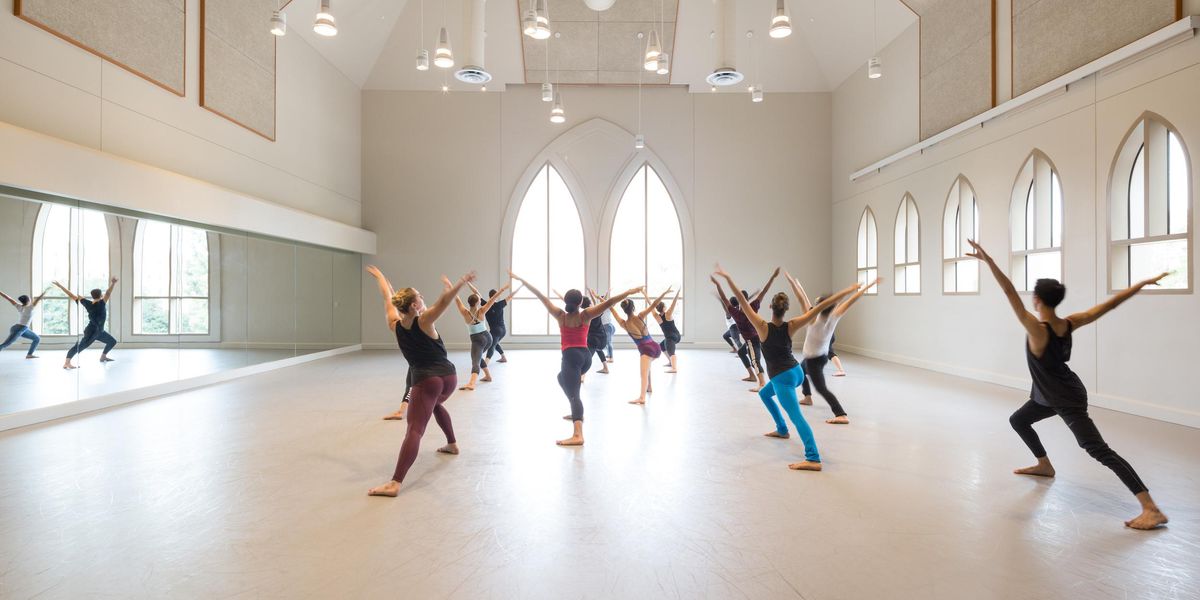Quick Q&A: Liz Casebolt and Joel Smith
The L.A.–based duo Casebolt and Smith combine talking, singing, and full-throttle dancing with a freshness that can delight or startle an audience—or make them laugh. Their latest work,
O(h), with a fair amount of good-natured ribbing of modern dance, will be performed at the Walking Distance Dance Festival in San Francisco May 31–June 1 and in Toronto and Winnipeg next month. Contributing editor Victoria Looseleaf spoke to the pair by phone in January.
How do speech and dance relate for you?
Liz Casebolt:
They each clarify the other. There are connections that can be found and read, but not literal illustrations of the movement. Layering also speaks to our process. We’ll purposely try to complicate something for ourselves. We’ll do this very physical, dance-y movement phrase and have a chatty conversation on top of that—a set movement phrase and an improvised conversation.
Joel Smith:
In one of our improv structures, I give Liz the lyrics to a song and Liz has to give me the movement. It’s literal in the sense that she’s going to use the words to motivate her movement material. My direction to her is on how to sing it. Her direction to me is on how to dance it. So there are two kinds of text being used—a song being sung while somebody’s dancing, and the conversation back and forth that illustrates how we build a dance.
Is the back-and-forth conversation designed to make the work more accessible?
Smith:
It’s a way to help the audience into our work. They see the process and they also see the product. But we do it in a manner that it still feels all part of the performance—humorous, cheeky, campy, ironic at times.
We have several works that intentionally include the audience. We speak to them directly and we’re OK when they talk back. We can respond to any feedback: a response, question, or statement. But we know how to move forward.
We don’t want contemporary dance audiences leaving going, “I don’t understand that.”
Do you put words together in a similar way to putting steps together?
Casebolt:
The words are written and set, but as far as the structure Joel’s talking about, we keep it very conversational, sometimes speaking to each other onstage and sometimes speaking to the audience.
Smith:
We have a script that is built out of our rehearsal process, maintaining Liz and Joel the whole time. But it has to have the quality of happening in the moment.
Casebolt and Smith in
O(h). Photo by Troy Conrad, Courtesy Casebolt and Smith.
What are some of the challenges of speaking and dancing?
Casebolt: There’s the physical challenge of dancing and trying to have a calm, relaxed conversational tone. There’s also the stamina issue.
Smith:
Another challenge is that since we want it to be conversational, we have to make sure what we say doesn’t feel scripted. Actors deal with that all the time. When you add the layer of dancing it has to feel in the moment.
Casebolt: We’ve given ourselves permission to improv in the moment, so there’s also this element of responding—“Oh, he said that differently.” Allowing that change in the moment keeps it fresh.
Have you studied acting?
Smith: Liz and I aren’t taking acting classes because we’re not trying to be anyone other than ourselves. To remain being Liz and Joel and to illuminate our relationship onstage and still do it as if we haven’t rehearsed it a thousand times—that’s the challenge. Knowing we don’t have to be in character makes it easier. A lot of people say how true it feels to them, that we’re just being ourselves.
Different facets of our personalities come out that we are able to access onstage. At times we appear to be kids who are surprised when the other person says something funny. Other times we’re more professorial—we have all this knowledge to share.
Casebolt:
Sometimes we’re just questioning or wondering, breaking something down to be able to respond inside a set structure.
Do you find that there are expectations for a male/female duo?
Smith: We use the work as an opportunity to challenge conventional genders. So many [onstage] relationships closet the male—we don’t do that. We use our gender and sexuality dynamic to our advantage. We have no interest in creating another heterosexual duet.




